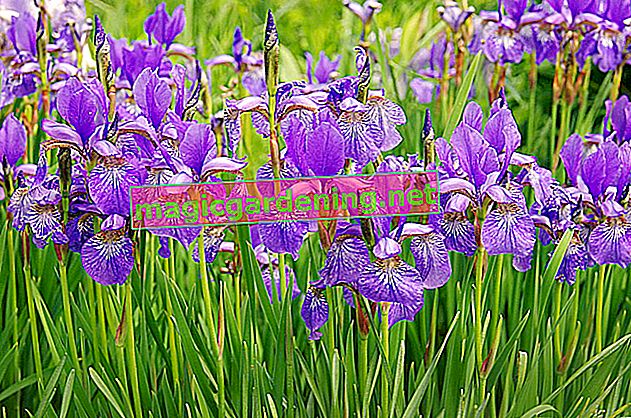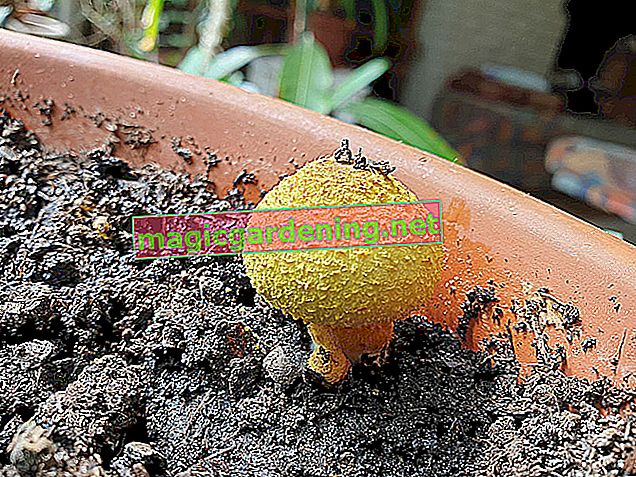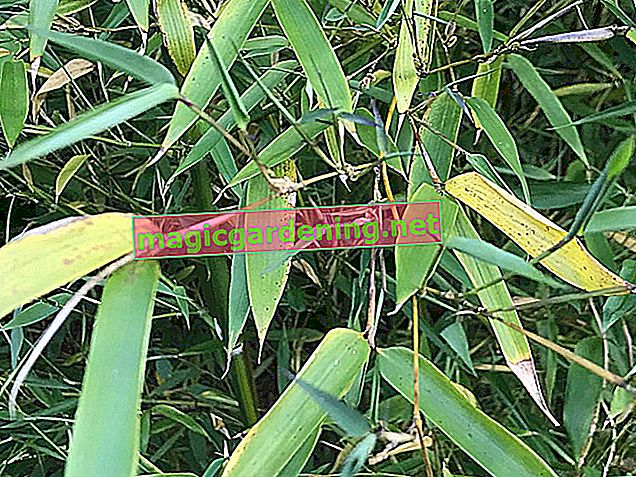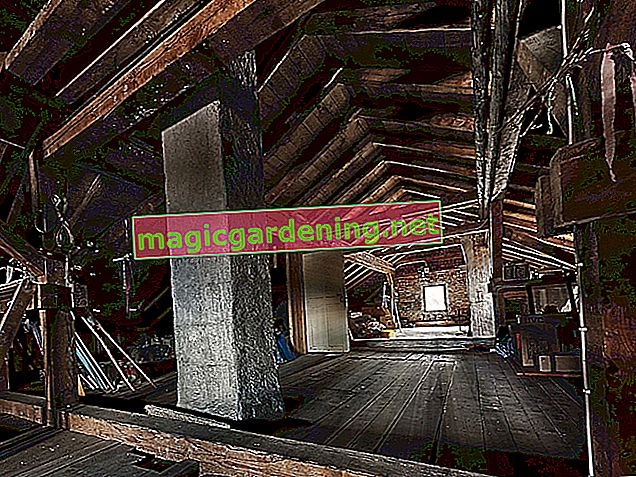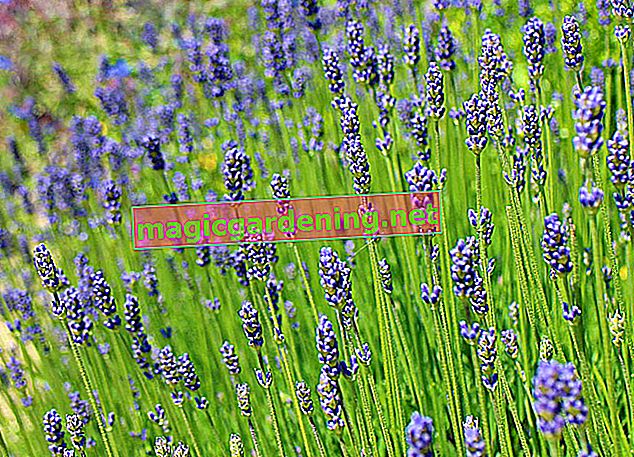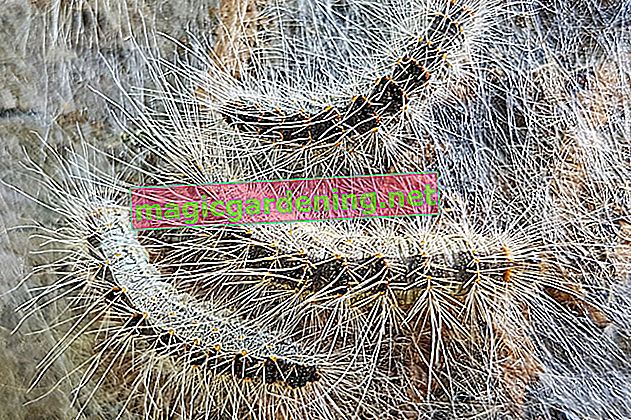
Plant the snowflake correctly
So that the snowflake flower can start its blossom festival punctually in May, plant the flower in the balcony container provided from mid-April. Before you fill in the potting soil, pottery shards over the water drain ensure that no waterlogging can occur. Put the young Bacopa only as deep into the soil as you did before in the seed pot and pour soft water over it. Until mid-May, the exotic grace lingers on the sunny balcony during the day to spend the nights in the house. This hardening is beneficial to vitality and abundance of flowers.
also read
- The perfect location for the snowflake flower
- The snowflake flower - hardy or not?
- Creative garden design without lawn - 5 ideas that inspire you
Care tips
The grateful snowflake is satisfied with the following care program:
- Keep the substrate slightly moist with soft water
- Ideally, let the water run to the roots through a funnel
- Apply liquid fertilizer every 14 days from May to September
- No cleaning is required
Do not worry when the summer blooming spectacle comes to an end in autumn. A Bacopa is not hardy, but still has the life force for a cultivation of several years. Cut the flower back vigorously and move it to a light, frost-free winter area. At temperatures of 5-8 degrees Celsius, water now and then without applying fertilizer.
Which location is suitable?
The snowflake flower feels at home in a sunny to partially shaded, warm location. The exotic flower does not like the blazing midday sun. So keep an eye out for a sheltered spot on the west or east side of the house. Incidentally, a summer rain shower does not affect the weather-resistant Bacopa, as is the case with other sensitive balcony plants.
Continue reading
The correct planting distance
In a young Sutera cordata, you cannot immediately tell what opulent volume the plant develops. With a plant spacing of 20 cm, you give a snowflake enough space to unfold in all its blossoms in the flower box (13.18 € on Amazon *) or in large tubs.
What soil does the plant need?
The uncomplicated character of a snowflake is expressed not least in terms of substrate. Use commercially available compost-based potting soil with as little peat as possible. So that the summer flower does not get into trouble due to waterlogging, add a few handfuls of lava granules (€ 10.95 at Amazon *) or perlite (€ 32.90 at Amazon *) respiratory flakes.
When is the flowering time?
With a flowering period from May to October, the snowflake trumps the vast majority of summer perennials. If she is given a balanced water and nutrient balance during this time, no further measures need to be taken. A Bacopa gets rid of dead flowers automatically, so you can save yourself the hassle of cleaning up.
Cut the snowflake correctly
The less a snowflake is bothered, the more impressive its bloom develops. Therefore only cut back the long shoots when it is unavoidable. Only shorten the plant shortly before moving it to the winter quarters.
Watering snowflake flower
The professional regulation of the water balance is decisive for the successful course of cultivation. How to properly water the snowflake flower:
- Keep the substrate constantly slightly moist without causing waterlogging
- If the earth dries up, the flower dies
- Do not water until the surface is 1 cm deep
- Preferably water with lime-free water
The sunnier the location, the greater the need for watering. During hot summer days it may be necessary to water early in the morning and again in the evening. So that the water reaches the roots through the dense flower shoots, use a funnel without further ado.
Fertilize snowflake properly
When it comes to nutritional needs, the snowflake is undemanding. If you apply a liquid fertilizer every 14 days from May to September, this point is fully covered in the maintenance program.
Pests
Aphids have no qualms about attacking a snowflake. You should therefore regularly check the undersides of the leaves to see whether the pests have settled here. At the first signs of an infestation, use the classic soft soap solution against the beasts. To do this, mix 1 liter of lime-free water with 15 milliliters of soft soap and a few splashes of alcohol. Spray the afflicted Bacopa every 2-3 days until the plague is over.
Overwinter
The snowflake flower thrives for several years in its South African homeland. The only obstacle to accomplishing this masterpiece in our regions is the frosty winter temperatures. So that the Bacopa will beautify your balcony again next summer, overwinter the flower like this:
- In autumn temperatures below 10 degrees Celsius, prune the plant vigorously
- Put in a bright winter quarter with temperatures between 5 and 8 degrees Celsius
- Water less and do not fertilize
In spring, repot your floral winter guest in fresh substrate. As soon as there is no longer any fear of ground frost and the mercury column exceeds 10 degrees, the Sutera cordata moves to the balcony.
Propagate Snowflake
In July or August, cut non-flowering head cuttings 5-8 cm long. Remove the lower leaflets and place two thirds of the shoots in a pot with poor substrate. Moisten the soil regularly with soft water at room temperature. A transparent hood creates a warm, humid microclimate around the cuttings, which encourages rooting. If new leaflets sprout, the process goes according to plan and the cover can be removed. Throughout the winter, place your pupils in a bright window seat at a cool 5-8 degrees Celsius.
Is snowflake poisonous?
Nothing is known about an intolerance to snowflake flowers. You can therefore safely move the pretty summer flower into the family household. Intentional or unintentional consumption of flowers and leaves is not harmful to human health or to animals.
Nice varieties
- Big Baja: A richly blooming snowflake flower with up to 120 cm long tendrils, covered with white star blossoms
- Scopia Double: The premium variety impresses with its lush, double, light blue flowers
- Pink Beauty: A rarity among the snowflake flowers with light pink flowers that adorn a dark pink throat
- Big Pearl Falls: This Sutera cordata adorns the hanging basket with a waterfall of pink star blossoms
- Scopia Violet: The lilac flowers contrast wonderfully with the white and pink Bacopa varieties


